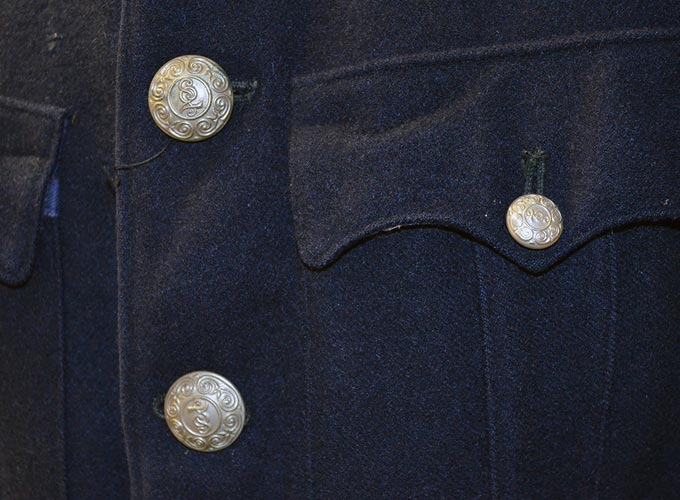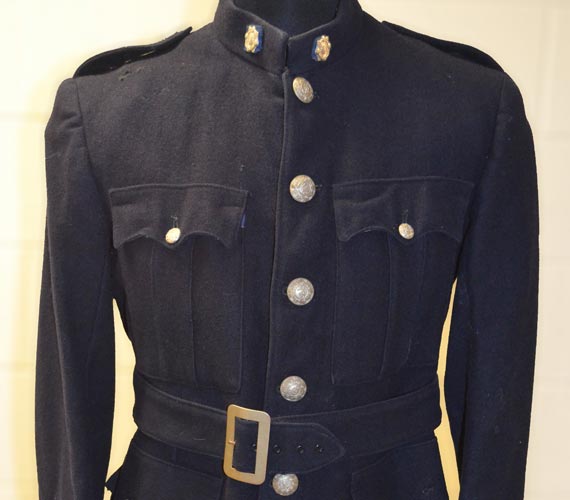Description
An Garda Síochána frock coat worn during the 1920s and 30s. The Garda Síochána badge is in the form of a Celtic cross, with the intertwined letters G.S. at the centre. The crest carries the inscription, ‘Ghárda Síothchána na h-éireann’ which translates as ‘Guardians of the Peace of Ireland’.
In January 1922, the British government handed over power to the Irish Free State’s provisional government. Michael Collins, leader of the provisional government, believed that the new Irish Free State police force, the Civic Guard, needed the experience of the Royal Irish Constabulary (RIC) to deal with the decline in law and order. Collins was keen to retain a non-imperial form of the RIC however many in the Irish Republican Army (IRA) disagreed. Former members of the RIC and Dublin Metropolitan Police, including men who had supplied intelligence to Collins during the War of Independence, were instrumental in the establishment of the new force.
In February, the disbandment of the RIC began and recruits for the Civic Guard started their training. Former RIC members were included among the instructors of the new recruits who were drawn from Sinn Féin and the IRA. In May, the Kildare Mutiny occurred when the Civic Guard recruits refused to take orders from former RIC men. Michael Collins' death, the mutiny and a subsequent inquiry led to major changes in the force. The Civic Guard were disbanded and reconstituted, most of the senior RIC men left and the force was disarmed.
In 1923, the Civic Guard was renamed An Garda Síochána. The force’s crest and dark blue uniform were radically different from the RIC, however the influence of its predecessor continued. The Garda employed civilian advisors from the RIC and retained a similar organisational structure (albeit with different names). Recruits continued to train at the former RIC Phoenix Park Depot and on graduation were stationed in old RIC barracks. The Garda retained the RIC duty manual until the 1940s and continued with many of the constabulary’s policing duties including collecting tillage and census returns, enforcing weights and measures and dog licensing.




